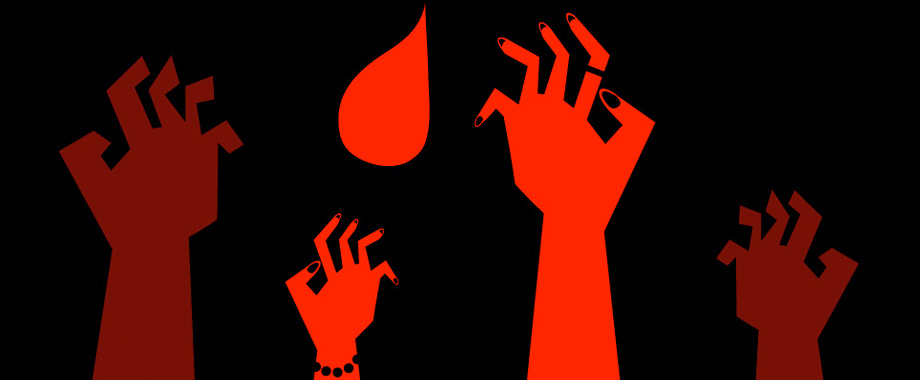Spike Lee’s work has always been deeply concerned with issues of race and class. It’s most apparent in the acclaimed director’s iconic films like Do the Right Thing (1989) or Malcolm X (1992), which showcase the topics as their central themes, but he even manages to sneak them into ostensibly apolitical genre exercises, like the heist film Inside Man (2006). The one unifying factor is that he’s always chosen to explore these issues through the lens of realism—up until now, that is.
While he hasn’t by any means shed his commitment to the discussion of racial politics in the Kickstarter-funded Da Sweet Blood of Jesus—a remake of the 1973 cult blaxploitation horror flick Ganja and Hess, and Lee’s most recent film—he has opted to address them in the realm of the fantastical. Protagonist Dr. Hess Greene (Stephen Tyrone Williams) is a wealthy anthropologist studying the ancient Ashanti Empire. His research leads him to discover a dagger from the civilization, which his research assistant, Dr. Lafayette Hightower (Elvis Nolasco), plunges into his boss’s chest towards the end of the film’s first act. Greene awakens unscathed—only to discover that his assistant has shot himself. Greene also develops a ravenous craving for blood, which he satiates by availing himself of the ample resources emanating from his colleague’s dead body.
Greene realizes that he needs blood to survive, and quickly sets out to find more. He begins by stealing samples from a local hospital, which he later drinks at a cocktail party in his expansive Martha’s Vineyard estate—though he’s unable to consume it after his manservant Seneschal (Rami Malek) spikes it with vodka in one of the film’s funniest scenes.
Despite the satisfaction he gets from blood, the vampire life is a lonely one for Greene until he finds companionship in Hightower’s widow, an upper-class British woman named Ganja (Zaraah Abrahams). Despite her curiosity about her husband’s fate, she is entranced by Greene, and she’s happy to spend countless hours getting high and having sex with him. While it seems at first that he is content to spare her from having to share his fate, the temptation eventually grows too strong, and he seals her fate as his vampire bride with a bite into her neck.
This might all seem to happen merely for shock value—and much of what occurs on-screen certainly is shocking. The film contains both some of the most sexually explicit and graphically violent scenes of Lee’s career, and they’re tempting to dismiss as a way to draw attention to a film otherwise likely to be largely ignored by moviegoers. But Lee uses them as a device to milk the satire that could otherwise risk lying dormant in his narrative. Unlike the exploitative sequences frequently found in Game of Thrones and countless other films and shows, Lee uses nudity as a way to showcase the raw physicality and power of the human body. He overwhelms us with long, languishing shots of the bodies, and dares us to suggest that black can’t be beautiful.
Likewise, the violence—though often grotesque—reveals the extent of the vampires’ addiction to blood. Like many addicts, Ganja and Greene have to commit horrifying acts to get their fix, and the graphic nature of Lee’s depiction of them spotlights the grim nature of their predicament. Though the characters derive satisfaction from the blood, their pleasure comes at a great price.
Lee shows a similar lack of subtlety when it comes to the socioeconomic class of his characters—though, like the sex and violence, it never feels unnecessary. While Greene is happy to chow down on his poorer victims, he needs someone of a social status comparable to his to call his partner-in-blood. Ganja’s ability to fulfill this need is exaggerated to comic effect—particularly through her behaviour towards Seneschal, but the emphasis helps us to see the focal points of Lee’s satire.
Some of these points do get obscured over the course of the film’s two-hour plus running time, but Da Sweet Blood of Jesus mostly succeeds as a potent satire of addiction, race, and class. Horror has a grand tradition as a vehicle for social commentary, and it’s refreshing to see a director steer the genre away from being a springboard for young-adult blockbusters and towards a higher cause.







